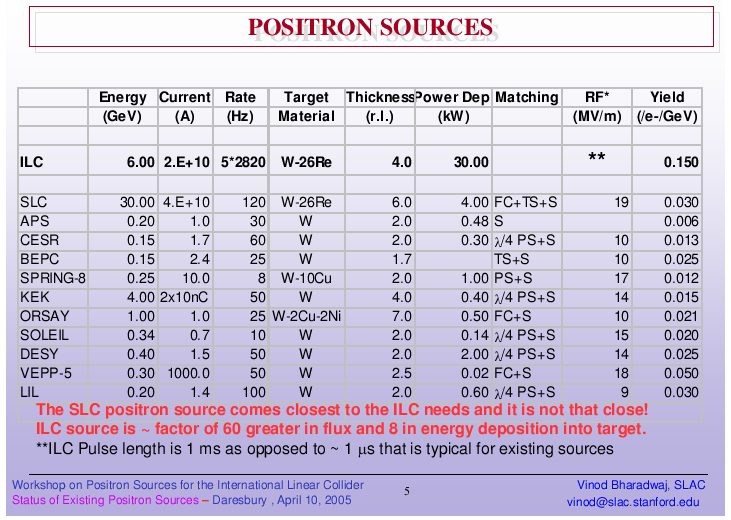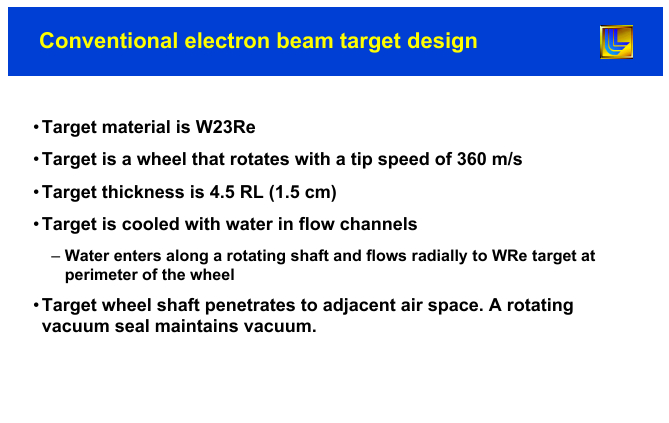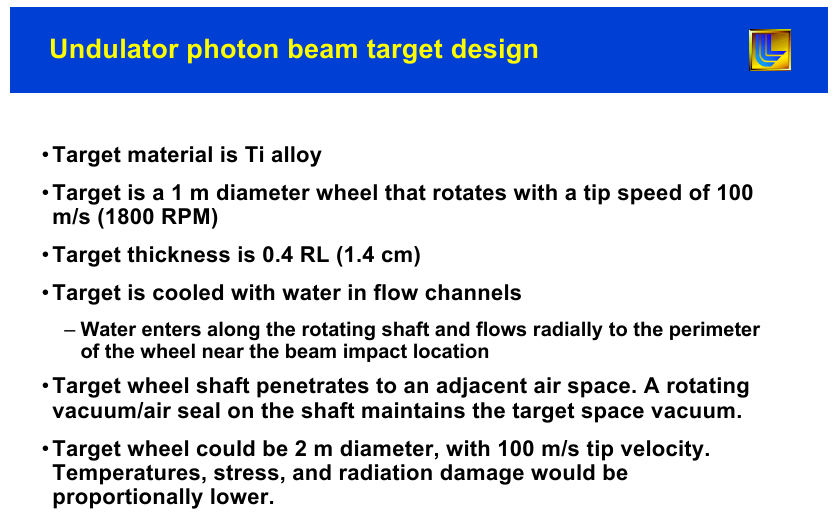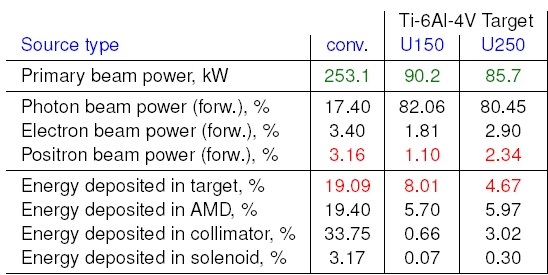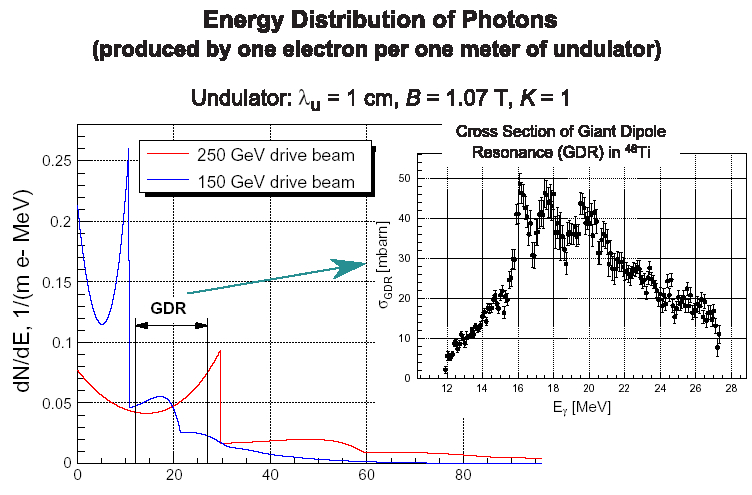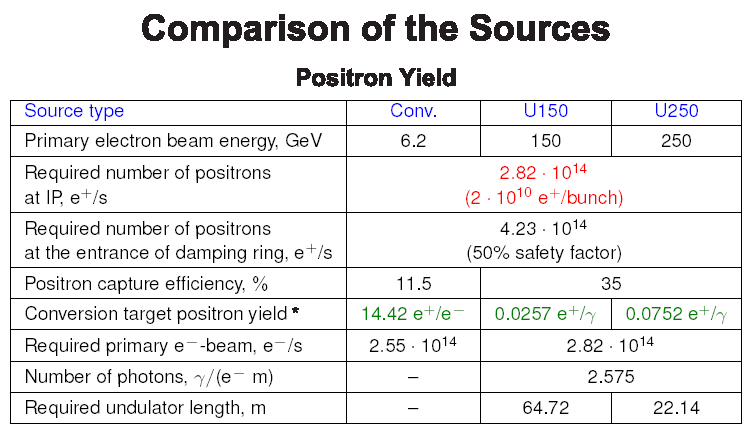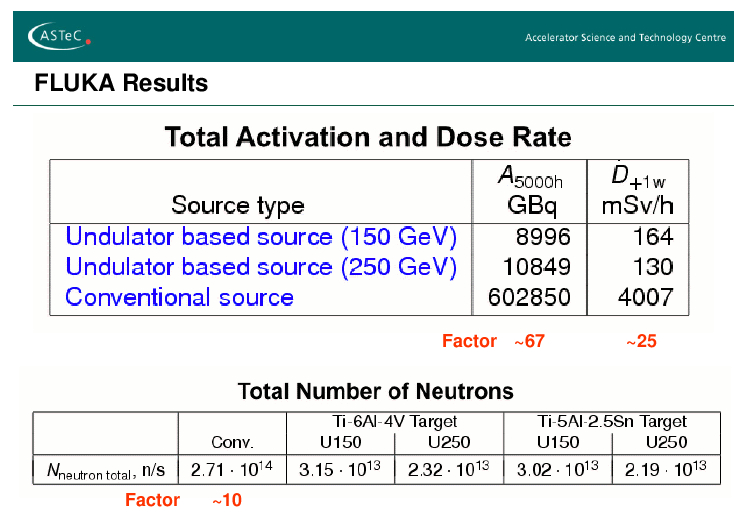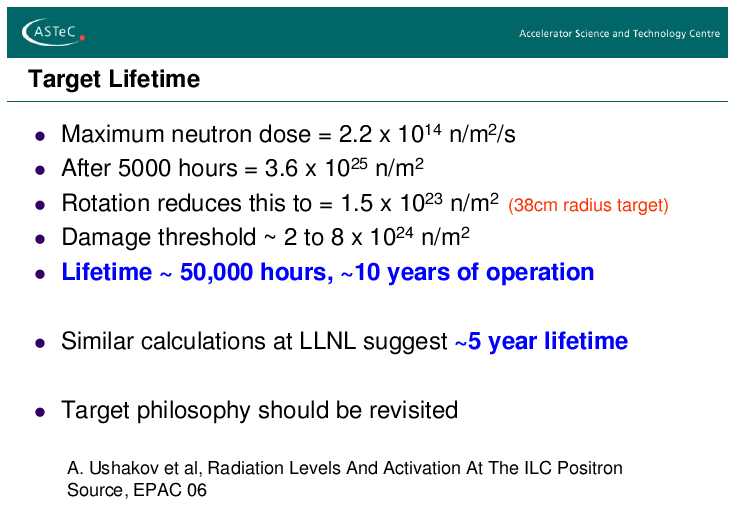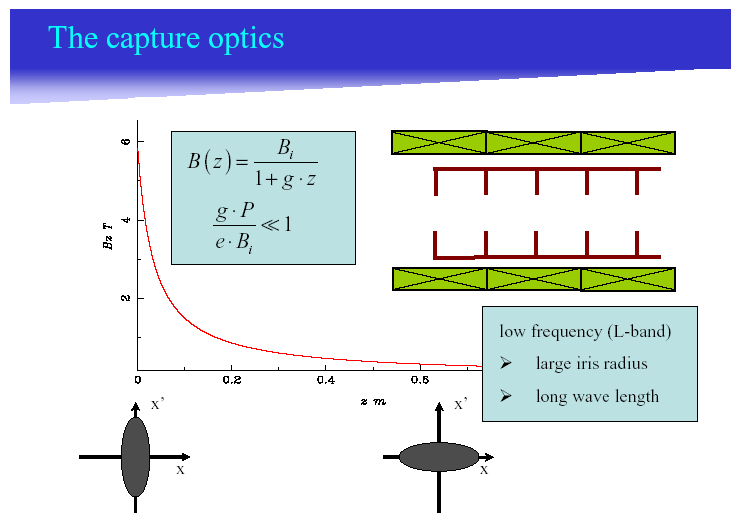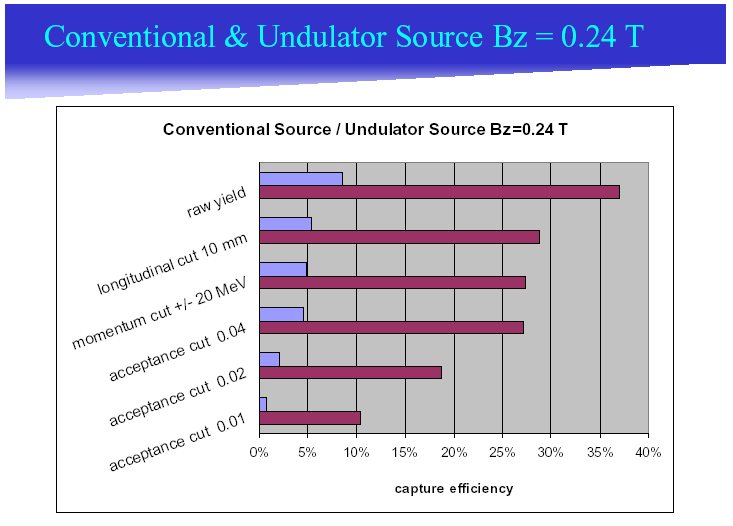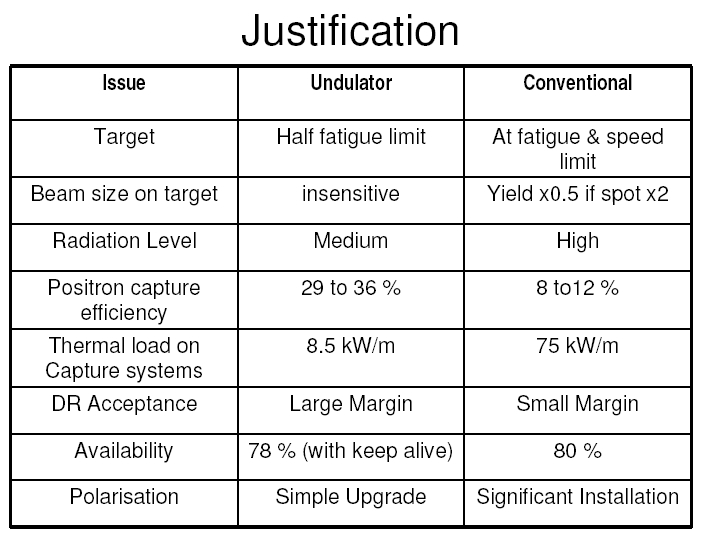 At Snowmass 2005 the 'sources working group' recommended to choose the undulator-based source as 'save' ILC source because of its lower fatique limit (by a factor of about 2), lower thermal load on the capture systems (by a factor of about 8) and its higher capture efficiency (by a factor of about 3) at the target compared to a conventional source. More details are given here. Concerning the deposited energy on the target and its activiation, the laser-Compton-based source may even have less technical requirements than the undulator source, because the photon energy of the laser-Compton source is much higher than that of the undulator source. |
